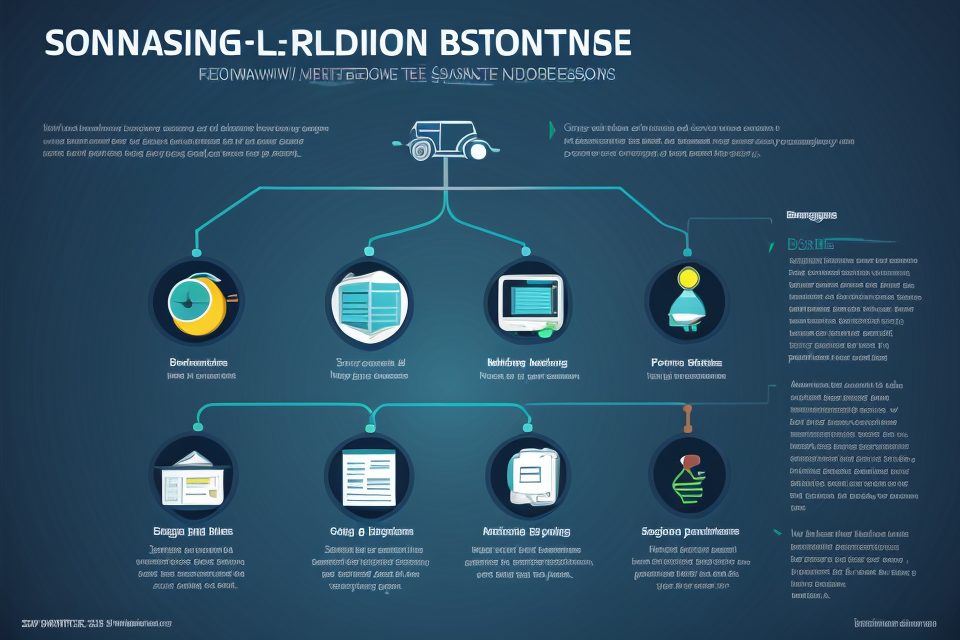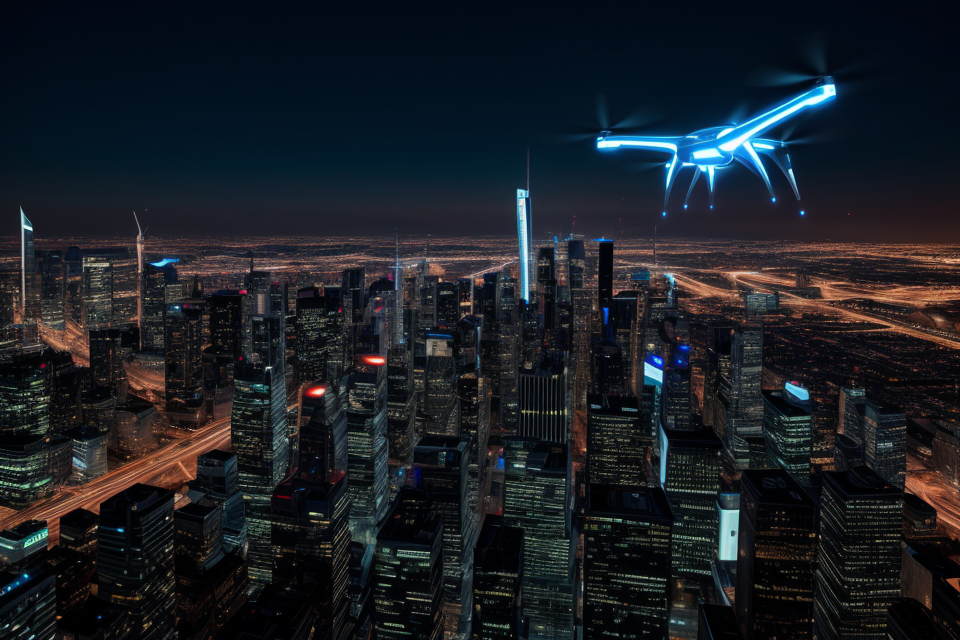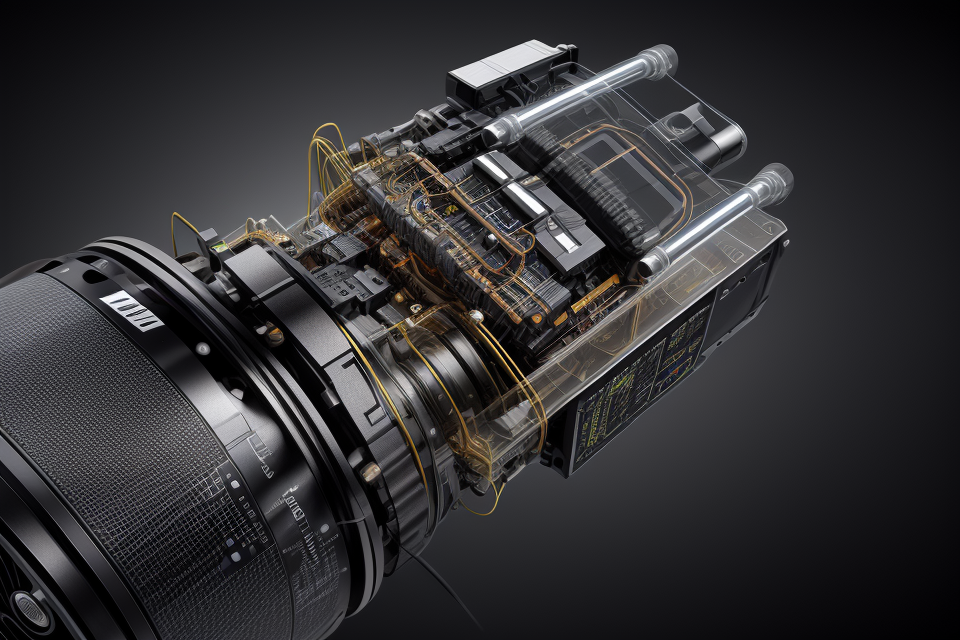
Sensor technology has been around for decades, but it’s only recently that it has become a game-changer in various industries. From healthcare to transportation, security to entertainment, sensors are transforming the way we live, work and play. They help us collect data, automate processes, and make informed decisions. With the rise of the Internet of Things (IoT), sensors are becoming even more important, as they allow devices to communicate with each other and exchange information. In this article, we’ll explore why sensor technology is so important and how it’s revolutionizing the world we live in. So, buckle up and get ready to discover the incredible power of sensors!
The Importance of Sensor Technology in Everyday Life
The Growth of Sensor Technology
Advances in Materials Science
Sensor technology has witnessed tremendous growth in recent years, driven by advances in materials science. The development of new materials with enhanced properties has enabled the creation of sensors that are more sensitive, selective, and durable. For instance, the use of graphene, a two-dimensional material with exceptional electronic and mechanical properties, has opened up new possibilities for sensor design. Similarly, the development of piezoelectric materials, which generate an electric charge in response to mechanical stress, has facilitated the creation of sensors that can detect pressure, vibration, and sound.
The Internet of Things (IoT)
The proliferation of the Internet of Things (IoT) has also fueled the growth of sensor technology. The IoT involves the connection of everyday objects to the internet, allowing them to exchange data and perform actions based on that data. Sensors play a crucial role in enabling this connectivity, as they provide the means to collect data from the physical world. For example, sensors embedded in smart homes can monitor temperature, humidity, and occupancy, while sensors in smart cities can monitor traffic flow, air quality, and noise levels.
Big Data Analytics
The growth of sensor technology has also been driven by the rise of big data analytics. As the volume and variety of data generated by sensors has increased, there has been a growing need for sophisticated tools to process and analyze this data. Big data analytics involves the use of advanced algorithms and machine learning techniques to extract insights from large and complex datasets. By enabling the processing of vast amounts of sensor data, big data analytics has enabled the development of new applications and services that rely on sensor data, such as predictive maintenance, real-time monitoring, and personalized recommendations.
Overall, the growth of sensor technology has been fueled by advances in materials science, the proliferation of the IoT, and the rise of big data analytics. As these trends continue to evolve, it is likely that sensor technology will play an increasingly important role in shaping the world we live in.
Applications of Sensor Technology
Healthcare
Sensor technology has revolutionized the healthcare industry by enabling the development of advanced medical devices and equipment. One of the most significant applications of sensor technology in healthcare is the development of wearable devices that can monitor vital signs, such as heart rate, blood pressure, and glucose levels. These devices can provide real-time data to healthcare professionals, enabling them to make more informed decisions about patient care. Additionally, sensor technology has enabled the development of non-invasive diagnostic tools, such as MRI and CT scanners, which can provide detailed images of the body without the need for invasive procedures.
Transportation
Sensor technology has also transformed the transportation industry by enabling the development of advanced driver assistance systems (ADAS) and autonomous vehicles. ADAS systems use sensors to monitor the vehicle’s surroundings and provide alerts to drivers, such as when they are drifting out of their lane or approaching a pedestrian. Autonomous vehicles rely on sensor technology to navigate roads, detect obstacles, and make decisions about routing and speed. These systems have the potential to reduce accidents and improve traffic flow, making transportation safer and more efficient.
Agriculture
Sensor technology has also found its way into agriculture, where it is being used to optimize crop yields and improve sustainability. Sensors can be used to monitor soil moisture levels, temperature, and other environmental factors that affect plant growth. This data can be used to create more accurate models of crop growth and predict when crops are likely to be ready for harvest. Additionally, sensors can be used to monitor the health of crops, identifying problems such as pests or nutrient deficiencies before they become serious issues.
Environmental Monitoring
Finally, sensor technology is being used to monitor the environment and track changes in weather patterns, air quality, and water quality. Sensors can be placed in remote locations to collect data on temperature, humidity, air quality, and other factors that affect the environment. This data can be used to inform policy decisions, track changes in the environment over time, and identify areas that require additional monitoring or remediation. Overall, sensor technology is revolutionizing the way we monitor and understand the world around us, enabling us to make more informed decisions and take action to protect the environment.
The Science Behind Sensor Technology
How Sensors Work
Principles of Sensor Functionality
Sensors are devices that convert physical parameters into electrical signals. These signals can then be processed and interpreted to provide information about the physical parameter being measured. The basic principle of sensor functionality involves transduction, amplification, and signal processing.
Types of Sensors
There are several types of sensors, including mechanical, thermal, optical, and electrical sensors. Each type of sensor has its own unique characteristics and is designed to measure specific physical parameters. For example, mechanical sensors are used to measure displacement, position, and acceleration, while thermal sensors are used to measure temperature.
Transduction, Amplification, and Signal Processing
Transduction is the process of converting a physical parameter into an electrical signal. This is achieved through the use of sensing elements, such as resistors, capacitors, and inductors. Amplification is then used to increase the amplitude of the electrical signal to a level that can be easily measured. Signal processing is then used to extract meaningful information from the electrical signal. This may involve filtering, amplification, and conversion to a digital format for analysis and interpretation.
Overall, the ability to accurately measure physical parameters has revolutionized many industries, from healthcare to transportation to manufacturing. Sensor technology continues to advance, with new sensors being developed all the time to measure ever more complex physical parameters.
Sensor Limitations and Challenges
Noise and Interference
Sensor technology, while offering numerous benefits, is not without its limitations and challenges. One of the most significant issues is noise and interference. Sensors can pick up signals that are not relevant to the intended measurement, leading to inaccurate data. This noise can come from various sources, including electromagnetic interference, temperature changes, and vibrations.
To mitigate this issue, engineers must carefully design sensors that are resistant to noise and interference. This can involve using materials that are less sensitive to external signals or incorporating sophisticated algorithms that filter out unwanted data. In some cases, sensors may need to be calibrated regularly to account for changes in environmental conditions that can affect their accuracy.
Power Consumption and Durability
Another challenge facing sensor technology is power consumption and durability. Many sensors rely on batteries or other power sources to operate, which can limit their lifespan and effectiveness. Some sensors are designed to be low-power, which can help extend their battery life, but this can also reduce their sensitivity and accuracy.
In addition to power consumption, sensor durability is also a concern. Sensors are often exposed to harsh environments, which can damage their components and affect their performance over time. Engineers must design sensors that can withstand extreme temperatures, moisture, and other environmental factors to ensure their longevity and reliability.
Privacy and Security Concerns
Finally, sensor technology raises privacy and security concerns. Many sensors collect personal data, such as biometric information or location data, which can be sensitive and potentially invasive. There is a risk that this data could be accessed or misused by unauthorized parties, raising concerns about privacy and security.
To address these concerns, engineers must design sensors that incorporate robust security measures, such as encryption and access controls. Additionally, users must be informed about the data that is being collected and how it will be used, and they must have the ability to opt-out or control their data usage if desired. Overall, sensor technology has the potential to revolutionize the world we live in, but it is essential to address these limitations and challenges to ensure its safe and effective use.
The Future of Sensor Technology
Emerging Trends and Innovations
Quantum Sensors
Quantum sensors are a relatively new innovation in the field of sensor technology. They are based on the principles of quantum mechanics and can detect very small changes in physical properties, such as temperature, pressure, and magnetic fields. Quantum sensors have the potential to be much more accurate and sensitive than traditional sensors, and they can be used in a wide range of applications, including medical imaging, environmental monitoring, and navigation.
Biomedical Sensors
Biomedical sensors are designed to monitor various biological parameters, such as heart rate, blood pressure, and glucose levels. These sensors can be used to help diagnose and treat a wide range of medical conditions, and they can also be used to monitor the effectiveness of various treatments. Biomedical sensors are often non-invasive, which means that they can be used without causing any harm to the patient.
Sensor Fusion and Integration
Sensor fusion and integration is the process of combining data from multiple sensors to produce a more accurate and comprehensive picture of the environment. This technique is used in a wide range of applications, including autonomous vehicles, robotics, and environmental monitoring. By combining data from multiple sensors, it is possible to create a more complete and accurate representation of the world around us. This can help to improve the performance of machines and systems, and it can also help to improve safety by reducing the risk of errors and accidents.
Implications for Society and Industry
Enhanced Safety and Efficiency
Sensor technology has revolutionized the way we live and work, with its ability to collect and analyze data in real-time. One of the most significant benefits of sensor technology is its ability to enhance safety and efficiency in various industries. For example, in the transportation industry, sensors can detect potential hazards on the road, such as potholes or accidents, and alert drivers to avoid them. Similarly, in the healthcare industry, sensors can monitor patients’ vital signs and alert healthcare professionals to potential issues, allowing for quicker intervention and improved patient outcomes.
New Business Models and Opportunities
The rise of sensor technology has also created new business models and opportunities. For example, the Internet of Things (IoT) has enabled companies to create new products and services that rely on sensor data. These products and services can range from smart homes to autonomous vehicles, and they have the potential to transform entire industries. In addition, sensor technology has enabled new business models such as pay-per-use and subscription-based services, which can provide cost savings and increased flexibility for customers.
Ethical and Policy Considerations
As sensor technology becomes more widespread, there are also ethical and policy considerations that must be addressed. For example, the use of sensors in law enforcement raises questions about privacy and civil liberties. Similarly, the use of sensors in healthcare raises questions about data privacy and security. In addition, there are policy considerations around the regulation of sensor technology, particularly in industries such as transportation and healthcare, where safety and efficacy are critical. As such, it is essential to consider the ethical and policy implications of sensor technology as it continues to evolve and become more widespread.
The Continuing Evolution of Sensor Technology
The Role of Research and Development
The evolution of sensor technology is fueled by the continuous investment in research and development. Companies and research institutions worldwide are working on developing new and innovative sensors to address various challenges in different industries. Governments and private investors are supporting these initiatives, ensuring that the development of sensor technology continues to advance at a rapid pace.
The Need for Interdisciplinary Collaboration
The evolution of sensor technology also relies heavily on interdisciplinary collaboration. Scientists, engineers, and researchers from different fields are coming together to share their knowledge and expertise in the development of new sensors. This collaboration has led to the creation of sensors that can detect a wide range of phenomena, from changes in weather patterns to the behavior of cells in the human body.
The Exciting Potential Ahead
The future of sensor technology is exciting, with endless possibilities for advancement. As research and development continue, new sensors are being developed that can detect things that were previously impossible. The integration of sensors into everyday devices is becoming more common, allowing for the collection of data in real-time. This data can be used to make informed decisions and improve the quality of life for people around the world.
FAQs
1. What is sensor technology?
Sensor technology refers to the use of sensors to detect and measure physical inputs such as temperature, pressure, motion, and light. Sensors are devices that convert physical quantities into electrical signals, which can then be processed and analyzed by computers or other electronic devices.
2. Why is sensor technology important?
Sensor technology is important because it enables the collection of data that can be used to improve a wide range of applications, from healthcare to transportation to manufacturing. By providing real-time information about the environment, sensors can help to optimize processes, reduce waste, and improve efficiency.
3. What are some examples of sensor technology?
There are many different types of sensors, including temperature sensors, pressure sensors, motion sensors, and light sensors. Some examples of applications for sensor technology include smart homes, where sensors can be used to control lighting and heating, and industrial settings, where sensors can be used to monitor equipment performance and detect potential problems.
4. How is sensor technology being used in healthcare?
Sensor technology is being used in healthcare to monitor patient vital signs, detect early signs of disease, and improve the accuracy of medical diagnoses. For example, sensors can be used to monitor heart rate, blood pressure, and oxygen levels, which can help doctors to identify potential problems and adjust treatment plans accordingly.
5. What are some challenges associated with sensor technology?
One challenge associated with sensor technology is the need for power sources to operate sensors. In some cases, sensors may require batteries or other power sources, which can be problematic in remote or hard-to-reach locations. Another challenge is the need for accurate and reliable data processing and analysis, which can be complex and time-consuming.


